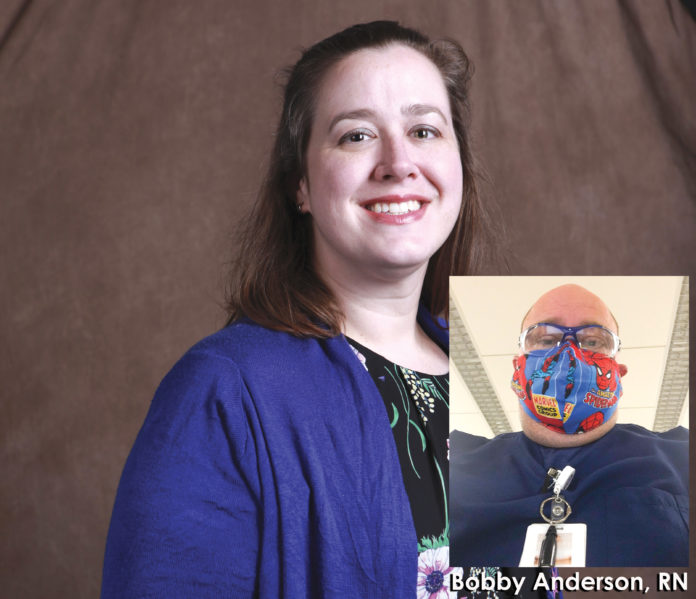
by Bobby Anderson, RN, Staff Writer
At the time, none of us knew.
The patient we received from the emergency room was breathing 40-50 times a minute and maxed out on oxygen.
The bipap – the last line of oxygenation before a ventilator – wasn’t keeping up and the patient was struggling.

$5,000 SIGN ON BONUS FOR FULL-TIME POSITION
We are hiring RNs for
Medical-Surgical – RNs
Emergency – RNs
Applicants should apply at
www.alliancehealthseminole.com
We knew the Coronavirus – or more technically, Covid-19 – was a thing.
Like all hospitals around us, there were whispers of a handful of patients on our campus being tested for it.
But they were in the ICU or on a separate floor, being taken care of by nurses with special personal protective equipment, wearing helmets and facemasks with powered air-purifying respirators.
Meanwhile, our patient was in respiratory distress.
Lab tests, chest x-rays and CT scans were reviewed along with a late call about the patient’s history.
The situation called for an ICU level of care.
The call from the patient’s doctor revealed COVID 19 was highly suspected.
That’s when COVID-19 became real for all of us in the room.
Outside the room, five respiratory therapists, the house supervisor and my charge nurse huddled together.
Eyebrows and voices raised.
The people I looked to most in the hospital for answers were without them.
Not only that, they were scared.
The bipap ventilation system was effectively aerosolizing the already contagious virus.
In layman’s terms, the high pressure flow made the viral particles even smaller and easier to transmit.
The surgical masks we were all wearing aren’t designed to be effective against the virus.
Two days later we learned the patient died while on a ventilator.
The day after that we learned results were positive for COVID-19.
Direct exposure was declared and all of us barred from returning to work for 14 days.
Nearly two weeks later we’re still learning.
Now I take my temperature twice a day and monitor for symptoms while logging everything online.
A fever over 100 degrees. A cough. Vomiting and diarrhea. Body aches.
All are symptoms of infection.
I haven’t been tested nor will I be tested unless I develop symptoms.
But my goal throughout this pandemic isn’t to complain or blame others. My goal, when I’m not at the bedside after my quarantine ends, is to highlight individuals who are helping turn the tide.
One of those individuals making a difference is Becky Lewis.
Lewis RN, MSN, CIC, is the system director of infection prevention for INTEGRIS, Oklahoma’s largest health system.
This virus has affected us all in different ways: personally, professionally and emotionally.
In Becky’s own words:
I see my family less and work more.
It is necessary but it is hard.
My five-year-old asks me when the sickness will be gone and my almost two-year-old cries when I come home because he knows that means it’s time to go to bed.
I come home and immediately start looking at any new common guidance documents from the CDC and the like to see if there were any revisions or updates overnight.
Every day I identify three to five items to focus on and work toward providing recommendations or guidance for each and relay that information to the system. The amount of updated or new information to digest is astounding.
I am currently on day 49 of non-stop COVID work. I am tired to my bones but know what I am doing is necessary and important work. I am working to keep our patients and caregivers safe.
I worry about the fear factor for our teams on the front line and the misinformation that can feel stronger than science.
My first week on the job as an infection preventionist was during H1N1 and it was wild, but we didn’t have the same social media presence that we do now and it is a strong element to work with and around.











